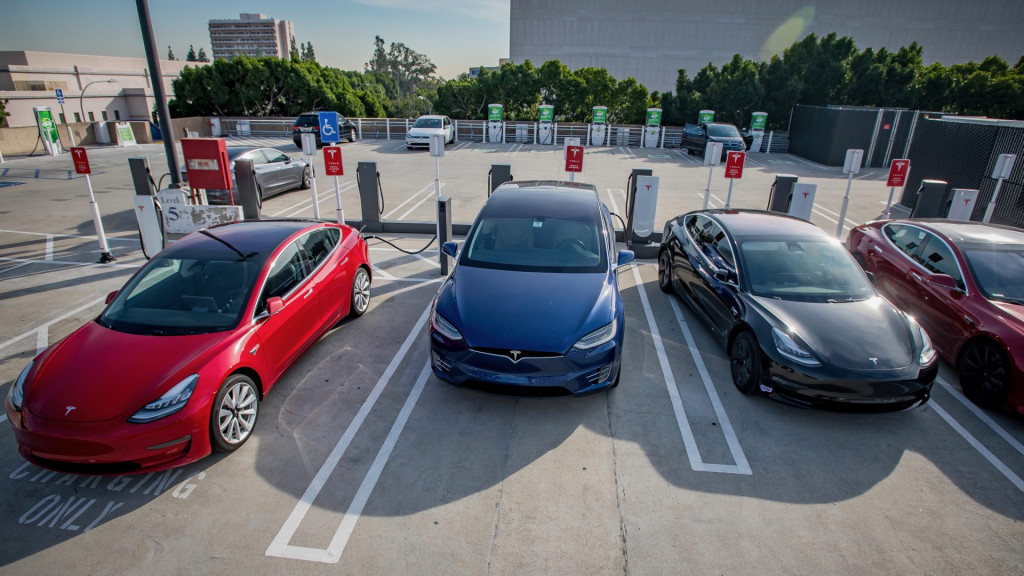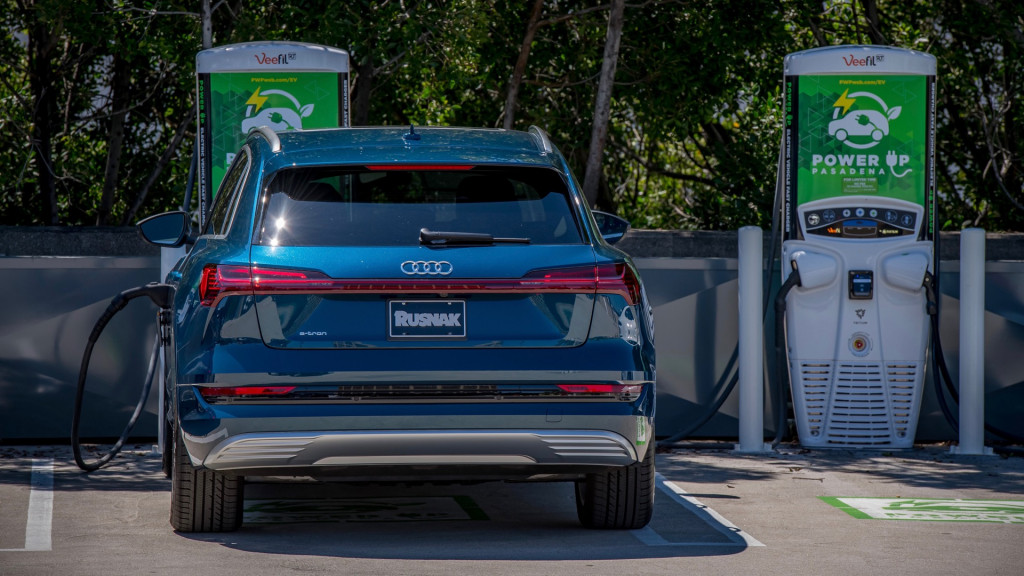A University of California Berkeley study of EV fast-chargers points to serious reliability issues for charging infrastructure in the nation's biggest EV market.
The study (via Automotive News) looked at 181 DC fast-charging sites in the greater Bay Area, covering 657 individual chargers. Of that total, 72.5% were found to be functional, which is much lower than the 95% to 98% uptime reported by charging networks.
In 22.7% of cases, chargers were nonfunctional because of "unresponsive or unavailable touchscreens, payment system failures, charge initiation failures, network failures, or broken connectors," according to the study. In addition, the charge cable was too short to reach an EV's charge port in 4.9% of cases.

Marengo Charging Plaza, Pasadena, California
This wasn't just a one-time phenomenon. A random sampling of 10% of the chargers surveyed, conducted approximately eight days after the initial survey, "demonstrated no overall change in functionality," according to the study.
This demonstrates that, in addition to installing more chargers, stakeholders must ensure the existing network is properly maintained. Public views of EV charging haven't turned wholly negative, but that likely won't remain the case for long if reliability issues continue.
Several studies have essentially shown that public charging is leaving a lot to improve upon in the experience. But Electrify America—the network birthed by the Volkswagen diesel scandal that is the only real rival to Tesla's Supercharger network—topped another recent survey in terms of user experience.

Marengo Charging Plaza, Pasadena, California
Going back 10 years, it seems that we were saying some of the same things. Although payment is now easier, some of the same issues with just getting a charge started—and keeping equipment online—remain.
As the number of EVs needing road-trip waypoint charging grows, the charging station of the future could also take on a different form from today's infrastructure. It seems that no matter what the end vision, greater support and reliability might need to be baked in from the start.












